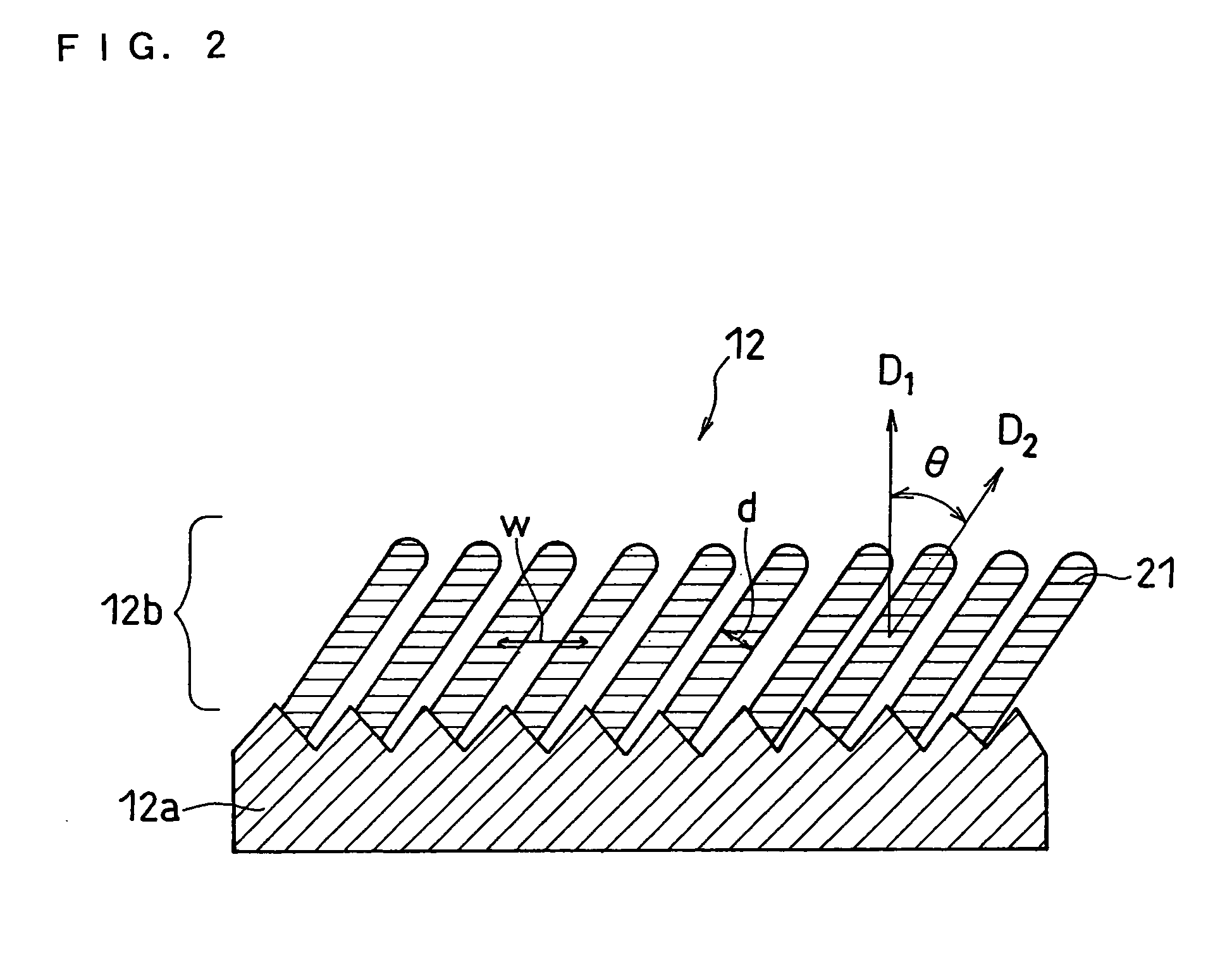Lithium secondary battery
a secondary battery and negative electrode technology, applied in the manufacture of electrodes, cell components, final product manufacturing, etc., can solve the problems of negative electrode deformation, non-homogeneous charge, and concern for a decline in cycle characteristics, so as to improve cycle characteristics, reduce material losses, and enhance charge and discharge efficiency
- Summary
- Abstract
- Description
- Claims
- Application Information
AI Technical Summary
Benefits of technology
Problems solved by technology
Method used
Image
Examples
example 1
[0073] A laminated lithium secondary battery shown in FIG. 1 was made.
(i) Preparation of Positive Electrode
[0074] A positive electrode material mixture paste was prepared by sufficiently mixing 10 g of lithium cobaltate (LiCoO2) powder with the average particle size of about 10 μm as a positive electrode active material, 0.3 g of acetylene black as a conductive agent, 0.8 g of polyvinylidene fluoride powder as a binder, and an appropriate amount of N-methyl-2-pyrrolidone (NMP). The obtained paste was applied on one side of a positive electrode current collector 11a comprising an aluminum foil with a thickness of 20 μm, dried, and rolled, to form a positive electrode active material layer 11b. Subsequently, a positive electrode was cut out to give a predetermined form. In the obtained positive electrode, the positive electrode active material layer carried on one side of the aluminum foil had a thickness of 50 μm, and a size of 30 mm×30 mm. To the current collector rear side havin...
example 2
[0120] Negative electrodes 2A to 2F below were made in the same manner as Example 1, except that in the formation of a negative electrode active material, a surface roughness Rz of the electrolyte copper foil was changed, while changing an angle α formed by the fixing board 35 of the vapor-deposition apparatus in FIG. 3 and the horizontal plane, adjusting conditions for vapor-deposition, and changing an angle θ formed by the current collector and the columnar particles. Additionally, Test Batteries 2A to 2F were made in the same manner as Example 1, except that the negative electrodes 2A to 2F were used.
Negative Electrode 2A
[0121] A negative electrode was prepared in the same manner as Example 1, except that an electrolyte copper foil with the surface roughness Rz of 30 μm was used for a current collector; an angle α formed between the fixing board 35 and the horizontal plane was set to 10°; and the vapor-deposition period was set to 14 minutes.
[0122] Properties of the negative ...
example 3
[0185] Negative electrodes 3A to 3E below were made in the same manner as Example 1, except that in the formation of a negative electrode active material, a surface roughness Rz of the electrolyte copper foil was changed. Additionally, Test Batteries 3A to 3E were made in the same manner as Example 1, except that the negative electrodes 3A to 3E were used and the thickness of the positive electrode active material layer was changed.
Negative Electrode 3A
[0186] A negative electrode 3A was made in the same manner as Example 1, except that a rolled copper foil with the surface roughness Rz of 0.3 μm was used for a current collector. Test battery 3A was made in the same manner as Example 1, except that the negative electrode 3A was used, while the thickness of the positive electrode active material layer was changed to 71 μm.
[0187] Properties of the negative electrode 3A are summarized below. [0188] Composition of Active Material: SiO0.5 [0189] Angle θ Formed Between Column-like part...
PUM
| Property | Measurement | Unit |
|---|---|---|
| angle | aaaaa | aaaaa |
| angle | aaaaa | aaaaa |
| porosity | aaaaa | aaaaa |
Abstract
Description
Claims
Application Information
 Login to View More
Login to View More - R&D
- Intellectual Property
- Life Sciences
- Materials
- Tech Scout
- Unparalleled Data Quality
- Higher Quality Content
- 60% Fewer Hallucinations
Browse by: Latest US Patents, China's latest patents, Technical Efficacy Thesaurus, Application Domain, Technology Topic, Popular Technical Reports.
© 2025 PatSnap. All rights reserved.Legal|Privacy policy|Modern Slavery Act Transparency Statement|Sitemap|About US| Contact US: help@patsnap.com



